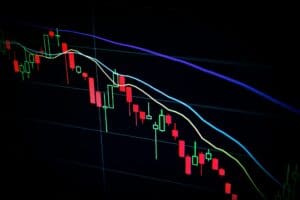Growth is the default setting for modern economies. Humans innovate and improve, find better ways of doing things. Only when shocks occur is this process of steady advance interrupted.
One of the long-established adages in financial markets is that business cycles never die of old age, and there is plenty of historical evidence to support that view.
The Depression of the 1930s followed the collapse of a speculative bubble and was made worse by a series of policy blunders. In the mid-1970s, the long postwar boom was brought to an end by the sharp rise in the cost of oil. America’s deep recession of the early 1980s was induced by Paul Volcker who was installed as chairman of the Federal Reserve to beat inflation and did so by pushing up interest rates to cripplingly high levels.
The slump of 2008-09 was a rerun of the 1930s only without the policy mistakes. Again, the trigger was a financial crisis that led to a sharp contraction of credit.
All of which makes the current state of the global economy particularly worrying, because none of the usual explanations for a slowdown apply. Interest rates are not being jacked up. On the contrary, the big central banks are providing more stimulus. Nor are finance ministries sucking demand out of their economies through tax increases or public spending cuts. Oil prices are steady and there has been no collapse in house or share prices. As Russell Jones and John Llewellyn of Llewellyn Consulting put it in a recent note:
“The present situation is highly unusual. None of the negative shocks that customarily trigger a downturn are in evidence … and yet, the macroeconomic environment – never satisfactory at a global level since the 2008 financial and economic crisis – is souring.”
On Tuesday, the International Monetary Fund will release its latest World Economic Outlook. As the IMF’s new managing director, Kristalina Georgieva, made clear last week it is likely to make grim reading. The pace of global growth has been abating for the past two years. Manufacturing was first to feel the impact, but there have been signs recently that the malaise is starting to hit services. What’s more growth is weakening pretty much everywhere. Georgieva calls it a synchronised slowdown.
So what’s going on? Theory number one is that this is simply a soft patch. If none of the usual causes of a recession are flashing red, then the obvious conclusion is that there is not going to be a recession.
Theory number two is that global growth is weakening because policy makers are using the wrong tools: too heavy a reliance on rock-bottom interest rates and quantitative easing, too little use of tax and spending. The IMF, which wants countries that have the scope to spend more freely on infrastructure and R&D, has some sympathy for this view.
Theory number three is that there are objective reasons why the global economy is heading for a recession but that they are not the usual ones. Protectionism is pushing globalisation into reverse; rising inequality has resulted in a dearth of demand despite a prolonged period of ultra-cheap money.
Theory number four cites the work of Nikolai Kondratiev, a Soviet economist who, in the 1920s said the world economy moved in long waves of 50 to 60 years, with an upswing driven by the arrival of a new technology and a downswing associated with its eventual eclipse. Periods of low growth come when the old technological paradigm is on its way out but has yet to be replaced by a new suite of innovations. If this view is right, the past decade will be seen as one such episode.
This leads to theory number five, which is that the global economy – rather like a marathon runner in the last few miles of a race – has hit the wall. Growth, even the modest levels of growth seen over the past decade, can only be achieved through the accumulation of dangerous amounts of debt and a reckless disregard for the future of the planet. Seen from this perspective, it is not a question of hoping the fourth industrial revolution – artificial intelligence, genomics, robotics, the internet of things – will breathe new life into the existing model of capitalism. Instead, it means a complete rethink of the model from first principles.
This still looks some way off. The initial response to the current slowdown has been to try a bit more monetary stimulus, even though central bankers such as Mario Draghi at the European Central Bank know it won’t really work. There comes a point when cutting interest rates is like pushing on a piece of string, and that moment has arrived.
Jones and Llewellyn suspect the next step will be monetary finance, which is where bonds are issued to pay for tax cuts and public investment, and the debt is then purchased by the country’s central bank. Crudely, the central bank prints money to pay for stimulus. It is known as “helicopter money” because governments dump large dollops of cash over their economies.
Sign up to the daily Business Today email or follow Guardian Business on Twitter at @BusinessDesk
This sort of approach has previously been shunned for fear that politicians will abandon all restraint and will keep spending until there is hyperinflation. Weimar Germany, Mugabe’s Zimbabwe and Maduro’s Venezuela are the examples usually cited.
Jones and Llewellyn say there are ways of countering the hyperinflation objection: for example that the extent of the stimulus could be legally limited to 3% of national output over two years.
If ever there was a time to give helicopter money a whirl then this is it. Inflation is low, as are long-term interest rates despite high levels of government debt. Sooner or later, a government somewhere will be willing it give it a try.






















